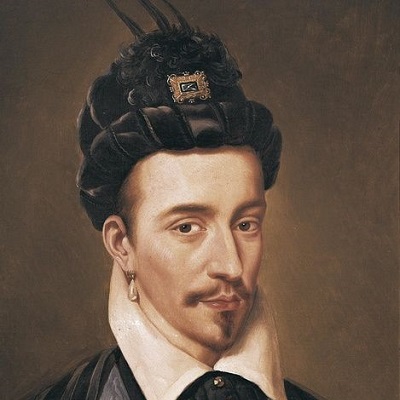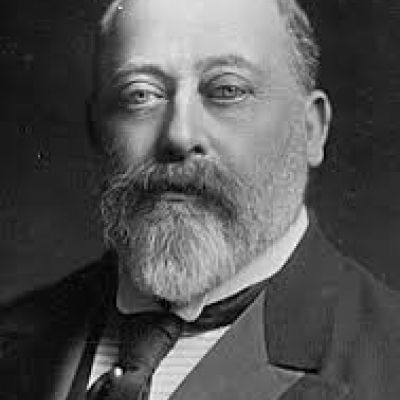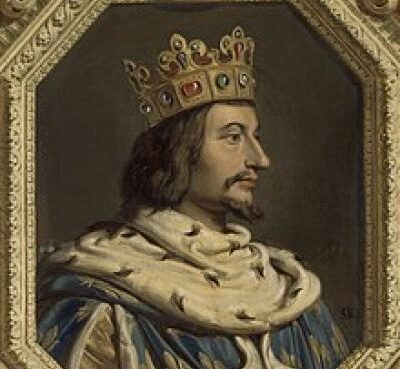Henry III of France- Biography
Page Contents
Henry III of France was the last of the House of Valois kings of France. From 1573 to 1575, he was King of the Polish-Lithuanian Commonwealth, and from 1574 till his death, he was King of France. Henry III was the fourth son of King Henry II of France and was not expected to succeed his father on the French throne. He was elected King/Grand Duke of the Polish-Lithuanian Commonwealth in 1573. He governed for two years, during which time the Henrician Articles were enacted into law. When Henry III was 22, his sole surviving older brother, King of France Charles IX, died of disease without any legal male issue, and Henry III abdicated the Polish-Lithuanian throne to become the next French king.
France was in the grip of the Wars of Religion at the time. Henry III had little influence over his country because violent factions backed by foreign countries, such as the Catholic League, Protestant Huguenots, and Malcontents, regularly ignored his authority. Following the death of his only live brother, Henry III was left without an heir. The Wars of Religion were followed by the War of the Three Henrys, a succession war. Henry III was slain in 1589 by a Catholic zealot, ultimately ending the House of Valois’ dominance in France.
Henry III of France- Birth, Age, Ethnicity, Siblings, Education
Alexandre Édouard de France, son of King Henry II and Catherine de’ Medici, was born on September 19, 1551, at the royal Château de Fontainebleau in Paris, France. Francis II of France, Elisabeth of Spain, Claude, Duchess of Lorraine, Louis, Duke of Orléans, Charles IX of France, Margaret, Queen of France, Francis, Duke of Anjou, Victoria of Valois, and Joan of Valois were his legitimate siblings.
Through his father, he also had three illegitimate siblings: Diane, Duchesse d’Angoulême, Henri d’Angoulême, and Henri de Saint-Rémy.
His father bestowed the titles of Duke of Angoulême and Duke of Orléans on him in 1560, and Duke of Anjou on him in 1566.
During his childhood, he garnered significantly more of his mother’s favor than any of his siblings. She referred to him as chers yeux (“dear eyes”), and even as an adult, he was showered with his mother’s love and attention. This seemed to irritate his older brother, Charles, who despised him due to his better health. Henry III was widely considered as his parents’ best son. He disliked hunting and physical activities, which were traditional Valois pleasures for his father and brothers. Instead, influenced by his mother’s Italian heritage, Henry III developed an interest in reading and painting. He was also a talented fencer who spent a lot of time practicing.
As a young adult, he grew interested in Protestantism as a means of rebelling against his parents. He started calling himself “a little Huguenot,” after the ethnoreligious community of French Protestants who follow the Reformed religion. Henry would frequently miss Mass and began singing Protestant psalms to his sister Margaret, asking her to renounce her religion and burn her Book of Hours. He was also said to have bitten off the nose of a Saint Paul statue. His mother eventually had to intervene and explain unequivocally that she would not tolerate such behavior from any of her children. Following this, Henry III mellowed and never demonstrated any Protestant tendencies again. In fact, for the remainder of his life, he remained a nominal Roman Catholic.
Even before he became king, Henry III was heavily involved in the Wars of Religion. He was a member of the royal army and took part in the Battles of Jarnac (March 1569) and Moncontour (October 1569), both of which ended in royal victory over the Huguenots.
Henry III, as Duke of Anjou, was the mastermind of the St. Bartholomew’s Day Massacre of 1572. During the siege of La Rochelle, he was also the commander of the royal forces (1572-73).
As King of Poland and Grand Duke of Lithuania, he reigns. On July 7, 1572, the Polish monarch Sigismund II Augustus died, and French ambassador Jean de Monluc offered Henry III as a suitable ruler to the Polish aristocracy. On May 16, 1573, an election was held, and Henry III was chosen as the first elected monarch of the Polish-Lithuanian Commonwealth. To become King of Poland, he had to sign the Pacta convent and the Henrician Articles, thus pledging to protect religious tolerance in the Polish-Lithuanian Commonwealth.
Despite his dislike for the limits his new duties imposed, he signed the documents, and on September 13, 1573, he received the “certificate of election to the throne of Poland-Lithuania” from the Polish delegation at a ceremony before the Parlement of Paris. He landed in Poland in January 1574 and was crowned on February 21, 1574, in Kraków. Poland and its people were a cultural shock to the young king that he would never forget. Several Polish cultural customs startled him and his friends, and the appalling poverty that lingered in the Polish countryside depressed them. In reply, the Polish people wondered if all French people were as concerned about their clothing as the monarch was.
On May 30, 1574, Charles IX died of disease, and he had no legitimate male children with his wife, Elisabeth of Austria. When Henry learned of his brother’s death, he left for France, leaving Poland in a state of constitutional turmoil. The coronation of King Henry III of France took place on February 13, 1575, in Reims Cathedral. He signed the Edict of Beaulieu a year later, allowing the Huguenots the right to public worship for their religion. While this action brought him new followers among the Huguenots, it also brought him, new adversaries, among the Catholics. In reaction, Henry I, Duke of Guise, a Catholic agitator, founded the Catholic League.
His younger brother Francis died on June 10, 1584, and because Henry III had no children or legitimate brothers left, Henry of Navarre, a descendant of Louis IX (Saint Louis), a Protestant, and the husband of Henry III’s sister, Margaret of Valois, became his heir presumptive under Salic law. Like Henry, I, Duke of Guise compelled Henry III to sign an edict that restricted Protestantism and annulled Henry of Navarre’s right to the French throne, the ongoing Wars of Religion morphed into the War of the Three Henrys.
On May 12, 1588, Henry I, Duke of Guise entered Paris in the midst of the Day of the Barricades, a large spontaneous popular revolt against the monarch. He was acclaimed as a hero by the traditionally Catholic city, while Henry III’s moderate, secular, reluctant government was condemned as oppressors. Henry III had to flee the city. However, after the Spanish Armada was defeated by Queen Elizabeth I’s England in 1588, Henry III perceived a diminution in the threat of foreign backing for the Catholic League.
On December 23, 1588, Henry III summoned the Duke of Guise to the Château de Blois. Louis II, Cardinal of Guise, the duke’s brother, was already present. The king was waiting for him in the private chamber adjacent to the royal bedroom, he was told. When he arrived, he and his brother were both executed by royal guardsmen. In addition, Henry imprisoned the duke’s son.
The murders sparked widespread indignation in the city, where the duke was adored. The Parlement charged the king with criminal offenses, and he had little choice but to reach out to his opportunistic heir, Henry of Navarre. In response to the Catholic League’s domination of the Parlement in Paris, Henry III established his own parliament at Tours in June 1589.
Marriage and Personal Relationships
The prospect of Henry III wooing Queen Elizabeth I of England was discussed in 1570. He was about 18 or 19 years old at the time, and she was about 37. They were started by Elizabeth herself, though historians believe it was more for the purpose of arousing Spain’s worry than for any actual interest.
Henry III was not thrilled with the prospect and referred to the English queen as a putain Publique (public whore). Ultimately, nothing resulted from these discussions. When Henry III became king, his younger brother Francis took over as Elizabeth’s suitor.
Before 1574, Henry got fascinated by Marie of Cleves, a well-known beauty. She was, however, already married to Henri I de Bourbon, prince de Condé.
After becoming king, Henry III attempted to obtain a divorce from Marie’s husband so that he might marry her himself. His mother was extremely opposed; her preferred candidate was Princess Elizabeth of Sweden. However, Marie died from a lung infection in 1574 before Henry could implement his plan.
On February 15, 1575, two days after his coronation, Henry III married Louise of Lorraine, the daughter of Nicholas of Lorraine, Duke of Mercœur, and Countess Marguerite d’Egmont.
Louise’s mother had died when she was a child and she was subsequently raised by her father and stepmother, Catherine of Lorraine. She had an unhappy childhood, without being loved by either her father or stepmother.
Henry III first saw Louise sometime after he became the King of Poland and was stunned by how closely she resembled Marie. After the Princess of Condé died, Henry spent months in deep mourning. Eventually, going against his mother’s wishes, he decided to marry Louise and sent his councilor and alleged lover, Cheverny, to Louise and her family to make them aware of his intention.
Despite the initial misgivings, Catherine would come to love her unpretentious, pious, and calm daughter-in-law. Louise virtually worshipped her husband, who, in turn, was always attentive to her.
The union did not produce any children, causing much grief to both Henry III and Louise. She reportedly suffered a miscarriage in 1576 but no historical proof exists of this. There were speculations in 1584 that Henry was looking to divorce her but this proved to be unfounded.
Contemporary sources speculated that he had sexual relationships with several members of his inner circle in the French court. This inner circle of the king’s favorite courtiers was known as the mignons.
While it cannot be denied that the king had intense relationships with them, many modern historians disagree. They point out that Henry III had several mistresses and many of them were quite well known whereas none of his male lovers was ever identified.
According to some historians, Henry III had plenty of enemies and it served their purpose to have the king portrayed as a homosexual. They took advantage of his distaste for war and hunting to portray him as effeminate and disregard his standing with the French public.
The enemies’ personal attacks on the king intensified further because of what they considered the king’s inability to produce an heir. Homosexuality at the time was considered the ultimate devilish vice.
It all culminated into a seething hatred among the deeply religious French people for their king. Furthermore, the Catholic Church wanted to remove the tolerant king in favor of one of their own, Cardinal Charles de Bourbon.
Death & Legacy
- Henry III understood the importance of taking back Paris. He led his forces towards the city and on August 1, 1589, was staying at Saint-Cloud. A young fanatical Dominican friar named Jacques Clément sought to see the king saying that he had important documents to show him.
- Clément handed the king a bundle of papers and told him that he had an important and secret message to deliver to him. Henry III ordered his guards to step back for privacy and Clément, sensing his opportunity, stabbed Henry III in his abdomen.
The guards killed Clément immediately. The king’s wound did not initially look fatal but he called all his officers around him and instructed them to be loyal to his successor Henry of Navarre as they had been to him. - Henry III died on 2 August, the day when he was supposed to lead an assault on Paris. Henry of Navarre succeeded him to the French throne, setting up the new Royal House of Bourbon, which, like Valois, was a cadet branch of the Capetian dynasty.
- Henry’s death was celebrated in Paris. Some even dubbed the assassination as an act of God. He was buried at the Saint-Denis Basilica. After his death, Louise, now known as “The White Queen” because of her white mourning attire, appealed to Henry IV to revoke her husband’s ex-communication, which had been imposed after the murder of Cardinal de Guise.
- Louise died on January 29, 1601, and was initially interred at the Convent of the Capuchins. However, in 1817, her remains were moved to be buried alongside her husband.
- The character of Henry III has appeared in projects spanning films, TV shows, plays, novels, and poetry, including Alexandre Dumas’ famous novel, ‘La Reine Margot’ (1845).
Also Read, Chloepowell, Incinders, and Soupachu.





